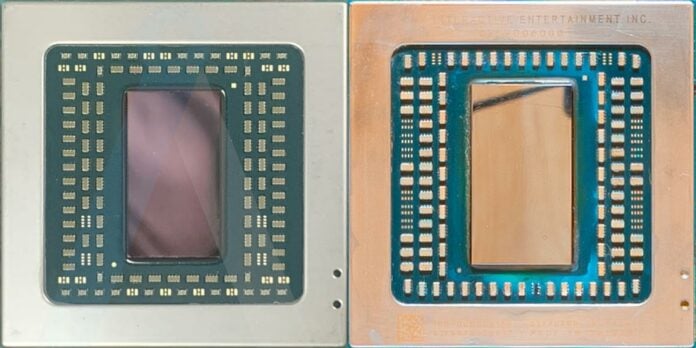It is no secret that Sony’s gargantuan PlayStation 5 console has evolved since release back in November 2020. Teardowns of the most recent variant, dubbed CFI-1202, have revealed current PS5 systems to be internally lighter and more efficient than initial launch models.
We now have reason why. According to a report from Angstronomics, CFI-1202 is the first PS5 refresh to include newer silicon built on TSMC’s N6 process node.
The new-and-improved chip, pictured above-left alongside the 7nm part featured in launch models, is said to be codenamed Oberon Plus. Die size has reportedly shrunk from ~300mm2 to ~260mm2 and the 13 per cent reduction enables a smaller, more efficient design that should also be cheaper to produce.
Despite progress in manufacturing, Sony has recently announced a PS5 price hike citing “high global inflation rates as well as adverse currency trends.” What does a die shrink mean for you as a consumer? Not a lot as things stand – the switch will be invisible to most – but looking ahead it is logical to assume the smaller 6nm processor will feature in Sony’s next major PlayStation 5 redesign reported to ditch the disk drive come September 2023.

